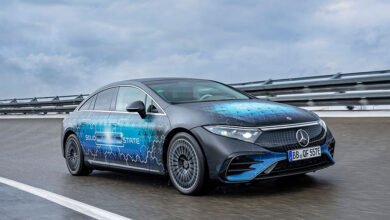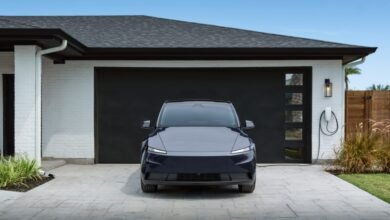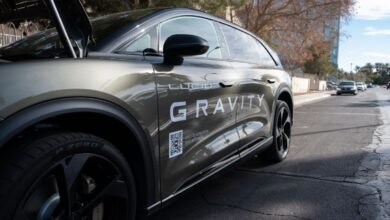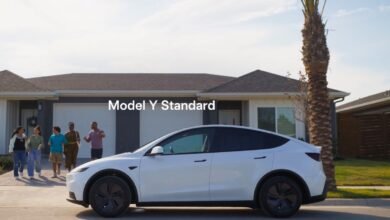Tesla’s ‘Affordable’ EVs Are Stripped-Down Model 3 and Y
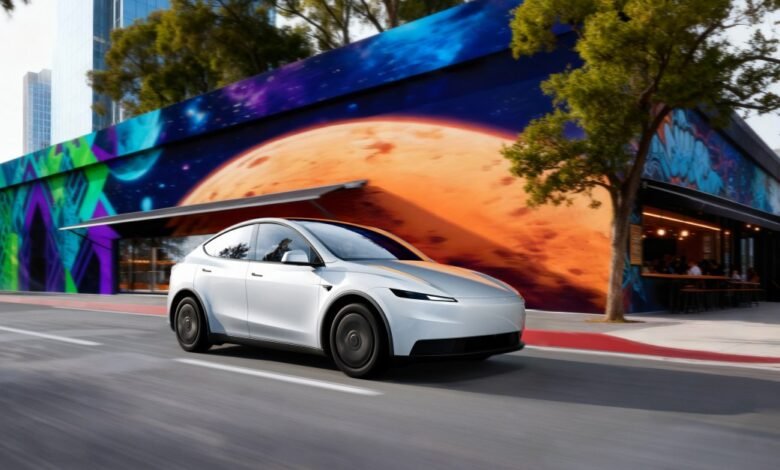
▼ Summary
– Tesla has announced two new entry-level electric vehicles: the Model 3 Standard starting at $38,640 and the Model Y Standard starting at $41,600, with deliveries beginning in December 2025.
– These stripped-down models achieve lower prices by removing features like panoramic glass roofs, power mirror folding, and advanced sound systems, and downgrading components like suspension and interior lighting.
– Both vehicles offer an estimated 321 miles of range, 0-60 mph acceleration in 6.8 seconds, and can add 150 miles of charge in 15 minutes with DC fast charging.
– Investors hope these affordable EVs will help Tesla recover from declining sales and challenges related to its aging lineup and Elon Musk’s political controversies.
– The new models deviate from Musk’s earlier promises of a revolutionary $25,000 EV and instead represent decontented versions of existing cars rather than a completely new affordable platform.
Tesla has officially launched its new, more budget-friendly electric vehicles, the Model 3 Standard and Model Y Standard, now available for order with deliveries set to begin in December 2025. These stripped-down versions of Tesla’s best-selling models aim to attract a broader audience by offering lower starting prices, $38,640 for the Model 3 and $41,600 for the Model Y, including destination and fees. While the company has long teased a revolutionary $25,000 EV, these latest offerings represent a more modest step toward affordability.
Both the Model 3 Standard and Model Y Standard are built on the updated “Highland” and “Juniper” platforms but come with significant feature reductions to cut costs. Standard equipment includes an estimated 321 miles of range, a 15.4-inch infotainment screen, a Grok-powered voice assistant, heated front seats, a heated steering wheel, and a dual-tone textile and vegan leather interior. However, buyers will miss out on several amenities previously included in higher trims.
Key omissions include front and rear light bars, a panoramic glass roof, power-folding mirrors, a second-row display, and puddle lamps. Interior elements like cabin lighting, mood lighting, suspension tuning, and seat controls have also been downgraded. Paint choices are limited to Stealth Gray, Pearl White, or Diamond Black, and the vehicles ride on smaller 18-inch wheels instead of the standard 19-inch versions.
Under the hood, both models feature rear-wheel drive powertrains capable of accelerating from 0 to 60 mph in 6.8 seconds. They support DC fast charging, adding up to 150 miles of range in just 15 minutes. The audio system has been scaled back to seven speakers, down from 15, and lacks a subwoofer. AM/FM radio is absent, and the center console offers no extended storage. The steering column is manually adjustable, and the suspension now uses passive shock absorbers instead of frequency-dependent units. Additionally, the driver-assist system does not include Autosteer functionality.
Many investors view these new models as a potential solution to help Tesla overcome its current challenges, which include an aging vehicle lineup and negative reactions to Elon Musk’s political statements. According to Reuters, producing these simplified versions costs about 20 percent less than manufacturing the refreshed models. Still, they fall short of the truly affordable electric car Musk has publicly envisioned for years.
Musk first discussed a $25,000 Tesla in a 2018 interview, later suggesting at the 2020 Battery Day event that the company could eventually manufacture 20 million such vehicles annually. He indicated this model would use Tesla’s next-generation platform and might even draw design inspiration from the Cybertruck. Instead of pursuing what many termed the “Model 2,” however, Tesla channeled resources into the Cybertruck, a high-cost, controversial model that has struggled in the market.
Musk has also delayed plans for a low-cost Tesla multiple times. Last year, he reportedly canceled a dedicated affordable EV program to focus on the Cybercab, a proposed autonomous vehicle priced below $30,000. During earnings calls, he questioned the need for an entry-level model, suggesting that fully self-driving technology could eventually make the concept irrelevant.
Following criticism, Musk revived the idea of a cheaper Tesla, eventually revealing that it would essentially be a decontented Model Y. Recent sightings of the Model Y Standard near Tesla’s Texas headquarters, along with firmware leaks, confirmed the approach ahead of the official announcement.
Whether these lower-priced variants can revitalize Tesla remains uncertain. Some analysts project the new models could boost deliveries to 1.85 million vehicles by 2026, reversing a two-year decline in sales. However, others express disappointment. Wedbush analyst Dan Ives, generally a Tesla supporter, noted being “relatively disappointed with this launch as the price point is only $5k lower than prior Model 3’s and Y’s.”
There is also concern that the Standard models may simply draw sales away from existing Model 3 and Model Y configurations, rather than expanding Tesla’s customer base. A genuinely affordable EV, priced below $30,000, would stand a stronger chance of reinvigorating the brand, especially as the average new car price approaches $50,000 and financing becomes more expensive.
With its extensive scale and supply chain advantages, Tesla had the potential to redefine the affordable EV segment. Instead, the company has chosen to refine a familiar formula, betting that slightly lower prices and trusted nameplates will be enough to reignite growth.
(Source: The Verge)
